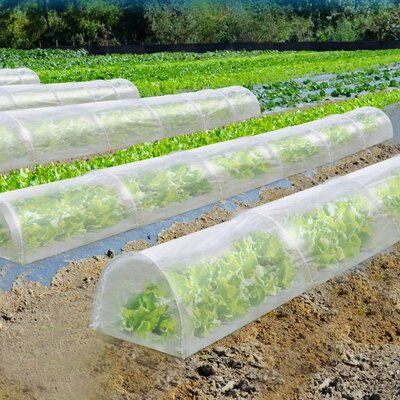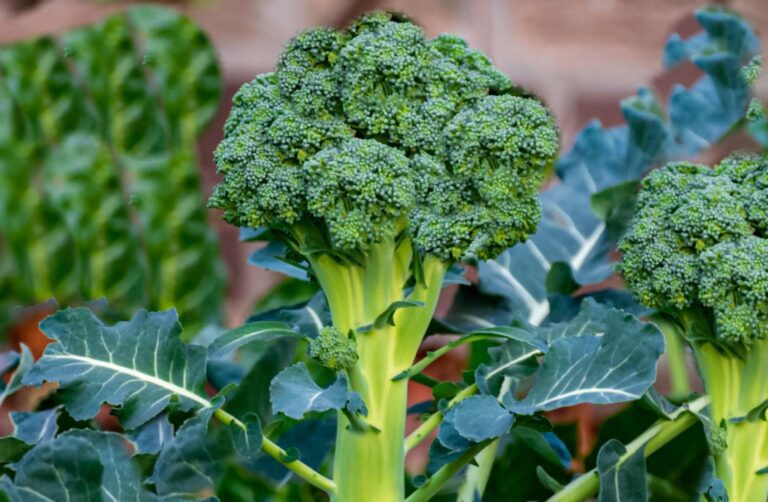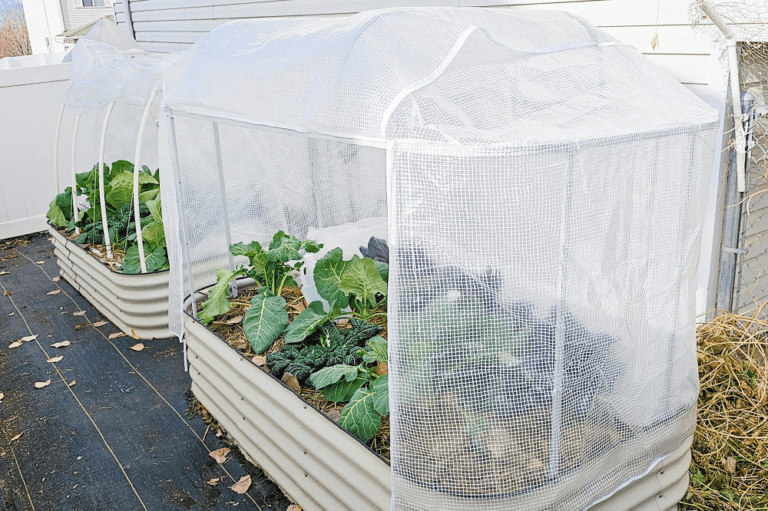Frost Blanket: Protection For Plants
Table of Contents
The Effects of Frost on Plants and Crops
Frost can have devastating effects on plants and crops, impacting their growth and overall health. When freezing temperatures occur, ice crystals can form within plant cells, causing the cell walls to rupture. This damage disrupts the flow of nutrients and water, leading to wilting and stunted growth. Additionally, frost can affect a plant’s ability to photosynthesize, reducing its capacity to produce energy and resulting in yellowing or browning of leaves.
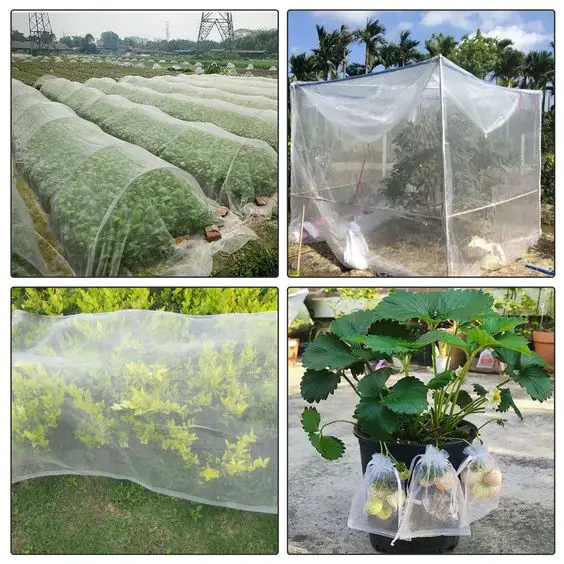
Certain crops are more susceptible to frost damage than others. Tender annuals, young seedlings, and tropical plants are particularly vulnerable, as they have not yet developed the protective adaptations of more mature plants. Fruit trees, such as citrus and stone fruits, can also suffer significant harm from frost, impacting both their yield and quality. Overall, the effects of frost on plants and crops can hinder their ability to thrive, resulting in reduced productivity and economic losses for farmers and gardeners alike. Understanding the detrimental effects of frost is crucial for implementing effective measures to protect plants and ensure their optimal growth and yield.
How Frost Blankets Provide Effective Plant Protection
Frost blankets are an essential tool for protecting plants from the damaging effects of frost. When temperatures drop below freezing, plants are susceptible to frostbite, which can lead to irreparable damage. Frost blankets provide a protective layer that helps insulate plants and retain heat, keeping them safe from freezing temperatures.
The effectiveness of frost blankets lies in their ability to create a microclimate around the plants. The blanket acts as a barrier, preventing cold air from coming into direct contact with the foliage. By trapping a layer of air between the plant and the blanket, the temperature around the plant remains slightly elevated, minimizing the risk of frost damage. Additionally, frost blankets also reduce heat loss through radiation, further enhancing their protective properties.

Not only do frost blankets protect plants from cold temperatures, but they also shield them from wind and harsh elements. The blankets act as a shield against strong winds, reducing the risk of desiccation and physical damage to delicate leaves and stems. This protection is especially crucial for young or newly transplanted plants that are more vulnerable to frost and wind damage.
Investing in high-quality frost blankets is a smart choice for any gardener or crop farmer seeking to protect their plants from the harmful effects of frost. By providing an effective barrier against freezing temperatures and harsh elements, frost blankets can help ensure the health and vitality of plants, ultimately leading to better yields and more successful gardening endeavors.
Different Types of Frost Blankets and Their Features
Frost blankets play a crucial role in protecting plants and crops from the detrimental effects of freezing temperatures. Different types of frost blankets offer various features to suit specific gardening needs. One common type is the floating row cover, which is made from lightweight fabric and is often used to safeguard delicate seedlings and young plants. These blankets are permeable to air and light, allowing for proper ventilation and photosynthesis while shielding plants from frost damage. Another popular option is the heavyweight frost blanket, which is ideal for protecting more established plants and larger areas. These blankets are thicker and denser, providing increased insulation and heat retention for plants during extreme cold spells.
Additionally, there are specialized frost blankets designed specifically for certain plants. For instance, tree and shrub frost blankets are constructed with a tapered shape to fit snugly around the base of trees or wrap around the entire shrub, preventing cold air from penetrating the delicate branches. These blankets also feature drawstrings or adjustable closures to ensure a secure fit. In contrast, vegetable garden frost blankets are often wider and longer to cover larger areas, enabling gardeners to protect the entire bed and its diverse crops. Furthermore, some frost blankets come with additional features, such as UV resistance, which helps to extend their lifespan and durability, ensuring long-term protection for plants in harsh winter conditions.
When selecting the right frost blanket for your garden, consider factors such as the severity of your local climate, the specific plants you want to protect, and your budget. Lightweight row covers may be suitable for mild frosts, while heavy-duty blankets are better for regions with extreme temperatures. Assessing the size and shape of your garden beds or the dimensions of your trees and shrubs will aid in choosing appropriately sized blankets. Moreover, it is essential to invest in high-quality frost blankets from reputable suppliers to ensure their effectiveness and longevity. With the right type of frost blanket, you can provide reliable protection for your plants and crops, safeguarding their growth and health during frosty seasons.
Here’s a table summarizing the different types of frost blankets and their features:
| Type of Frost Blanket | Features |
|---|---|
| Commercial Frost Blankets | – Specifically designed for plant protection.<br>- Available in various forms, including lightweight and heavy-duty options.<br>- Suitable for in-ground gardens and raised beds. |
| Floating Row Covers | – Lightweight materials (fabric or plastic).<br>- Shield plants from frost and cold temperatures.<br>- Ideal for protecting crops and seedlings. |
| DIY Frost Blankets | – Improvise with materials at home (e.g., old bedsheets, burlap, or other fabrics).<br>- Keep plants warm without direct contact. |
| Functionality | – Season Extension: Protect late fall crops before frost or safeguard crops from early spring frosts.<br>- Overwintered Cool Season Annuals: Encourage growth for cool-season plants surviving winter. |
Remember, frost blankets act like cozy winter coats for your plants, ensuring their well-being during extreme weather shifts.
Factors to Consider When Choosing the Right Frost Blanket
When it comes to choosing the right frost blanket for your plants, there are several factors that you need to consider. One important factor is the level of insulation provided by the blanket. Different blankets have different thicknesses and materials, which can affect their ability to protect plants from frost. Thicker blankets generally provide better insulation and are more effective at retaining heat around the plants.
Another factor to consider is the size of the blanket. You want a blanket that is large enough to cover your plants adequately, without leaving any gaps where cold air can seep in. It’s also important to consider the weight and durability of the blanket. You want a blanket that is lightweight enough to easily handle and install, but also durable enough to withstand the elements and last for multiple seasons.
Additionally, you should consider the breathability of the blanket. While it’s important to trap heat and protect plants from frost, it’s also essential to allow for proper air circulation. Look for blankets that have built-in ventilation features or are made from breathable materials, as this will prevent moisture buildup and reduce the risk of fungal diseases.
Lastly, consider the ease of installation and removal. Choose a blanket that is easy to handle and maneuver, as this will make it more convenient for you to install and remove as needed. Some blankets come with fastening mechanisms or drawstrings that make them easier to secure around plants.
By considering these factors, you can choose the right frost blanket that will provide optimal protection for your plants during cold weather conditions.
Step-by-Step Guide on Installing Frost Blankets for Plant Protection
Installing frost blankets is a simple process that greatly contributes to the protection and well-being of your plants. Here is a step-by-step guide on how to properly install frost blankets for effective plant protection:
1. Prepare the area: Before installing the frost blankets, ensure that the plants are properly watered and all weeds or plant debris are removed. It’s important to have a clean and well-maintained area to avoid any potential damage or interference with the blanket.
2. Measure and cut: Determine the size of your frost blanket by measuring the area you wish to cover. Use sharp scissors or a utility knife to cut the frost blanket to the desired dimensions. It’s advisable to cut the blanket slightly larger to accommodate any unforeseen growth.
3. Secure the edges: Lay the cut frost blanket over the plants, ensuring it covers them completely. Gently tuck the edges of the blanket around the base of the plants, securing it firmly to the ground. This helps to prevent any cold air from seeping in and damaging the plants.
4. Use stakes or weights: To keep the frost blanket in place and prevent it from being blown away, use stakes or weights along the edges. Wooden stakes or rocks can be used to secure the corners and sides of the blanket, providing stability during windy conditions.
5. Adjust for ventilation: It’s important to ensure proper ventilation under the frost blanket to prevent overheating or excessive condensation. Lift the edges of the blanket periodically to allow air circulation during the day, especially if the temperatures rise above freezing.
By following these simple steps, you can effectively install frost blankets to protect your valuable plants from frost damage. Taking the time to properly install the frost blankets will provide your plants with the necessary protection they need to thrive in colder temperatures.
Best Practices for Using Frost Blankets in Garden Beds
When it comes to protecting your plants in garden beds from frost, following best practices is crucial. By implementing these practices, you can ensure that your frost blankets are effectively utilized and provide optimal protection for your plants.
First and foremost, it is essential to properly secure the frost blankets over your garden beds. Make sure that the blankets are taut and snugly fit over the plants, without any gaps or loose ends. This will help prevent cold air from seeping in and reaching your plants, minimizing the risk of frost damage.
Additionally, it is recommended to cover your garden beds with frost blankets before nightfall when temperatures start to drop. By doing so, you can maximize the benefits of the blankets by capturing the warmth accumulated throughout the day and maintaining a stable microclimate around your plants. Remember to remove the blankets during the day to allow sunlight and air circulation, providing a healthy environment for your plants to thrive.
To further optimize the effectiveness of your frost blankets, consider using additional methods for frost protection. For instance, placing water-filled containers or jugs near your plants can act as thermal mass, absorbing and releasing heat, thereby shielding your plants from frost. Additionally, using mulch around the base of your plants can help retain soil warmth and provide an extra layer of insulation.
By adhering to these best practices and considering additional frost protection methods, you can safeguard your garden beds from frost damage and ensure the well-being of your plants. Stay tuned for more informative tips and techniques to help you enhance your gardening experience and maximize your plant’s potential.
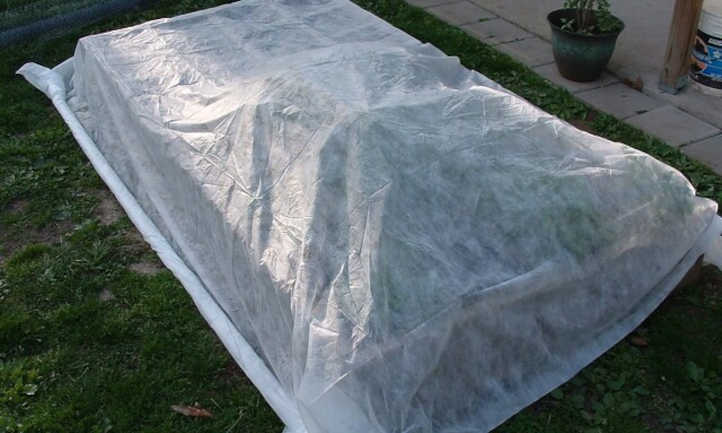
Protecting Potted Plants with Frost Blankets
Protecting Potted Plants with Frost Blankets
Potted plants require extra care during frosty weather to ensure their survival. Frost blankets provide an effective solution for shielding these delicate plants from the harsh effects of low temperatures. These blankets work by creating a protective barrier that insulates the plants and prevents frost damage.
When choosing the right frost blanket for potted plants, it is important to consider factors such as material, thickness, and size. Opt for blankets made from breathable fabric to avoid excessive condensation, which can lead to fungal diseases. Additionally, selecting a thicker blanket will provide better insulation for the plants. It is essential to choose a size that can fully cover the potted plant, allowing room for secure fastening without causing damage to the plant or pot. By considering these factors, you can ensure that your potted plants are adequately protected from frosty conditions.
Using Frost Blankets to Shield Trees and Shrubs from Frost Damage
Frost can be a major concern for trees and shrubs, posing a serious threat to their health and survival. However, using frost blankets can provide effective protection against frost damage. Frost blankets act as a barrier, shielding trees and shrubs from freezing temperatures and preventing ice crystals from forming on their leaves and branches.
When choosing frost blankets for trees and shrubs, it is important to consider the type of fabric and its features. Look for blankets that are thick and dense, as these provide better insulation. Additionally, opt for blankets that are breathable, allowing air and light to penetrate while still providing protection. This helps prevent the buildup of excessive moisture and reduces the risk of fungal diseases.
Installing frost blankets for trees and shrubs requires careful attention to detail. Begin by gently draping the blanket over the tree or shrub, making sure to cover all exposed parts. Secure the blanket firmly at the base of the plant using stakes or rocks to prevent it from being blown away by winds. Avoid tying the blanket too tightly, as this can cause damage to the branches. Finally, ensure that the blanket reaches the ground, creating a sealed environment that traps warm air around the plant.
Effective use of frost blankets for trees and shrubs requires proper timing and monitoring. Cover the plants before the first sign of frost, usually in the late afternoon or early evening when temperatures start to drop. Remember to remove the blanket during the day to allow sunlight and air circulation, which are essential for plant health. As the threat of frost diminishes, gradually reduce the amount of time the plants are covered until they can safely withstand the colder temperatures on their own.
While using frost blankets is an effective method to shield trees and shrubs from frost damage, it is essential to consider alternative methods as well. These may include using heating lamps, creating wind barriers, or even relocating vulnerable plants to warmer areas. By employing a combination of strategies, gardeners can ensure maximum protection for their trees and shrubs, safeguarding them against the harmful effects of frost.
Maximizing the Benefits of Frost Blankets for Vegetable Gardens
When it comes to vegetable gardens, maximizing the benefits of frost blankets is crucial for ensuring a healthy crop. Frost blankets provide an effective barrier against cold temperatures, protecting plants from frost damage and promoting growth even in chilly conditions. By implementing the following strategies, gardeners can make the most of this valuable tool:
1. Proper coverage: To maximize the benefits of frost blankets, it is essential to ensure complete and adequate coverage. Lay the blanket over the entire garden bed, making sure no gaps are left for cold air to seep in. Secure the edges tightly to prevent drafts from getting underneath. This comprehensive coverage will create a warm microclimate under the blanket, shielding the plants from freezing temperatures.
2. Timing is key: To optimize the benefits of frost blankets, it is crucial to know when to cover your plants. Keep a close eye on weather forecasts, particularly during the colder months, and be ready to spring into action when the temperature drops below freezing. By covering your vegetable garden promptly, you can prevent frost damage and help the plants thrive, even in cold snaps. Remember, prevention is always better than trying to salvage damaged plants later on.
By implementing these strategies and using frost blankets effectively, gardeners can take full advantage of their vegetable gardens regardless of the chilly outdoor conditions. With proper coverage and timeliness, these blankets serve as an essential tool for maintaining the health and productivity of your precious plants. Stay tuned for more tips and techniques to enhance your gardening skills and protect your crops from frost damage.
How to Determine the Ideal Time to Cover Plants with Frost Blankets
Determining the ideal time to cover plants with frost blankets requires careful observation and consideration of several factors. One of the most crucial elements to take into account is the temperature. Frost typically occurs when temperatures drop below freezing, usually around 32 degrees Fahrenheit (0 degrees Celsius). However, the specific temperature threshold for frost can vary depending on the type of plants and crops in your garden.
To accurately determine when to cover your plants, it’s essential to monitor the weather forecast regularly. Pay attention to the nighttime temperatures, as they are more likely to dip below freezing. Additionally, assess the daytime temperatures, as certain plants may still be vulnerable to frost even if the overall temperature remains above freezing during the day.
In conjunction with temperature, it’s vital to consider the humidity levels. High humidity can increase the likelihood of frost, as moisture in the air can freeze more easily. Keep an eye on the forecasted humidity levels and adjust your timing accordingly.
Another factor to consider is the specific plant species in your garden. Different plants have varying levels of frost tolerance. Consult a reputable gardening guide or consult with a local horticulturist to determine the sensitivity to frost of the plants you are growing. Certain plants may require earlier protection than others, as they are particularly susceptible to frost damage.
Lastly, assess the growth stage of your plants. Young, tender seedlings are more vulnerable to frost than mature plants. Consider covering them earlier to provide extra protection during the early stages of growth. Once your plants are well-established and have developed stronger resistance, they may not require covering until temperatures drop significantly.
By carefully evaluating these factors – temperature, humidity, plant species, and growth stage – you can determine the ideal time to cover plants with frost blankets. Protecting your plants from frost damage will help ensure their health and productivity throughout the colder months, allowing you to enjoy a flourishing garden.
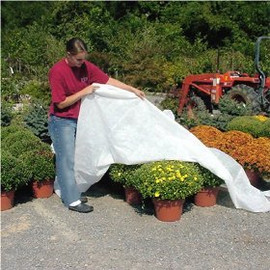
Understanding the Temperature Threshold for Frost Protection
Understanding the temperature threshold for frost protection is crucial for gardeners and farmers alike to safeguard their plants and crops. Frost occurs when the temperatures drop below freezing, causing ice crystals to form on plant surfaces. These ice crystals damage plant cells and disrupt their vital processes, ultimately leading to decreased plant growth and yield.
Different plant species have varying degrees of cold tolerance, and it is important to know the specific temperature threshold at which they are susceptible to frost damage. For example, tender plants such as tomatoes and peppers are typically more sensitive to frost and can be damaged at temperatures below 32°F (0°C), while hardier plants like broccoli and kale can withstand slightly lower temperatures before sustaining injury.
By understanding the temperature threshold for frost protection, gardeners can take proactive measures to shield their plants from harm. This knowledge allows them to accurately determine when to cover their plants with frost blankets or employ other protective measures to mitigate the impact of freezing temperatures. Monitoring the local weather forecast and knowing the specific temperature limits for different plant varieties are essential in maximizing the effectiveness of frost protection strategies and ensuring healthy plant growth.
Maintaining Proper Ventilation and Air Circulation with Frost Blankets
Proper ventilation and air circulation are crucial factors to consider when using frost blankets for plant protection. While these blankets play a vital role in insulating plants against damaging frost, inadequate airflow can lead to other issues such as condensation and the accumulation of excess moisture. To maintain a healthy growing environment and prevent potential problems, it is essential to ensure that plants have enough access to fresh air.
One way to achieve proper ventilation is by using frost blankets designed with breathable materials. These blankets allow for the exchange of air while still providing insulation. Breathable frost blankets are typically made from materials such as spunbond fabric or horticultural fleece, which allow air to pass through while trapping heat close to the plants. This design permits the circulation of fresh air, preventing the formation of stagnant pockets and promoting a healthy, well-ventilated environment for plant growth.
Another aspect to consider is the installation technique of the frost blankets. When covering plants, ensure that the blankets are not tightly sealed around them. Instead, leave some space for air circulation to occur. This can be achieved by securing the blankets loosely or using stakes to create a tent-like structure, allowing air to flow freely while still providing adequate protection. By paying attention to ventilation and air circulation, gardeners can help maintain optimal growing conditions for their plants while effectively protecting them from frost damage.
Certainly! Here’s a table summarizing how to maintain proper ventilation and air circulation when using frost blankets for plant protection:
| Aspect | Guidelines |
|---|---|
| Choose the Right Material | – Opt for lightweight frost blankets made of 100% polypropylene fabric.<br>- Avoid using heavy materials like bed sheets or burlap, which can restrict airflow. |
| Proper Installation | – Lay the frost blanket gently over your plants, ensuring it covers them completely.<br>- Secure the edges to prevent wind from lifting the blanket. |
| Ventilation Holes or Slits | – Create small holes or slits in the frost blanket to allow air circulation.<br>- These openings prevent condensation buildup and maintain proper airflow. |
| Monitor Moisture Levels | – Check for excessive moisture under the frost blanket.<br>- If condensation accumulates, lift the blanket briefly to allow evaporation. |
| Remove During Sunny Days | – On sunny days, uncover the plants to allow sunlight and fresh air to reach them.<br>- Re-cover them at night or during frosty conditions. |
| Regular Inspection | – Periodically inspect your plants under the frost blanket.<br>- Look for signs of wilting or excessive moisture. Adjust as needed. |
Remember, proper ventilation ensures your plants stay healthy while protected from frost.
Monitoring and Assessing Plant Health during Frost Protection
Monitoring and assessing plant health during frost protection is essential in ensuring the effectiveness of your efforts. By closely monitoring your plants, you can identify any signs of damage or stress caused by cold temperatures and take immediate action to mitigate further harm.
One way to assess plant health is by visually inspecting the foliage and stems. Look for any discoloration, wilting, or browning of the leaves, as these are common signs of frost damage. Additionally, check for any physical changes in the plant’s structure, such as brittle stems or blackened tissue, which may indicate severe cold injury.
In addition to visual cues, it is important to monitor the internal health of the plants. This can be done by examining the moisture levels in the soil and the overall growth rate of the plants. If the soil is excessively wet or if the growth rate has significantly slowed down, it could be an indication of frost damage. It is also advisable to regularly check the temperature around the plants using a thermometer, as extremely low temperatures can still be harmful even with the use of frost blankets.
To accurately assess plant health, it is recommended to keep a record of observations over time. This can be in the form of a garden journal, where you document any changes or improvements in the plants. By having a record, you can track the progress of your frost protection methods and make necessary adjustments if needed.
Overall, monitoring and assessing plant health during frost protection is crucial for successful plant survival. By staying vigilant and responsive to your plants’ needs, you can effectively protect them from the damaging effects of frost and ensure their long-term well-being.
Removing Frost Blankets: When and How to Do It Safely
Removing Frost Blankets: When and How to Do It Safely
Once the threat of frost has passed and temperatures have stabilized, it is important to promptly remove the frost blankets from your plants. Leaving the blankets on for too long can hinder the growth and development of your plants, as they may become overheated or suffer from inadequate air circulation. However, it is equally crucial to ensure that you remove the blankets carefully and without causing any damage to the plants.
To safely remove frost blankets, start by checking the weather forecast to ensure that there are no more freezing temperatures expected. Choose a day when the weather is mild and preferably on a calm day, as gusty winds can cause the blankets to whip around and damage delicate plants. Begin by gently lifting one corner of the blanket and carefully folding it towards the center, taking care not to jar or disturb the plants. Continue folding until you reach the opposite corner, and then fold the blanket in half. Lift the folded blanket away from the plants, being cautious not to brush against any foliage or flowers. Repeat this process for each blanket, making sure to handle them with care and avoid any sudden movements that may cause injury to the plants.
By following these steps and exercising caution, you can safely remove frost blankets from your plants without causing harm. Remember, the goal is to protect your plants from frost damage, but it is equally important to provide them with the optimal conditions for growth and development. With careful attention and timely removal, your plants will thrive and continue to bring beauty and abundance to your garden.
Additional Tips for Protecting Plants from Frost without Using Blankets
As a gardener, you may find yourself facing frosty conditions that threaten the health of your plants. While frost blankets are an effective means of protection, there are alternatives you can explore to safeguard your plants without using blankets. These additional tips can be especially useful for gardeners who prefer different methods or who may not have access to frost blankets.
One alternative method is to create a microclimate around your plants. This can be done by placing a layer of mulch around the base of the plants, which helps to insulate the soil and retain heat. Additionally, grouping plants together can provide some protection, as the plants can create a microclimate of their own. The idea is that by grouping plants, they can provide mutual protection by trapping heat and shielding each other from the chilly temperatures.
Another option is to use water as a protective measure. Water has a high heat capacity, meaning it can absorb and retain heat for longer periods. By watering the soil around your plants before a frost event, you can help regulate the temperature and mitigate potential damage. The water acts as a thermal mass, releasing heat slowly throughout the night and keeping the immediate area around the plants slightly warmer.
While these alternatives may not provide the same level of protection as frost blankets, they can still offer considerable benefits in reducing frost damage to your plants. Experimenting with different methods and closely monitoring your plants’ responses will help you determine the most effective approach for your specific garden. In the end, taking proactive steps to protect your plants from frost will ensure their health and maximize your gardening success.
Exploring Alternatives to Frost Blankets: Are There Better Solutions?
Frost blankets have long been a go-to solution for protecting plants from the damaging effects of cold temperatures. However, as gardening techniques and technologies continue to evolve, it is worth exploring alternative options that may offer better solutions. While frost blankets are effective in many cases, they have certain limitations that may not suit every situation or preference.
One alternative to consider is the use of cold frames or hoop houses. These structures provide a more permanent and controlled environment for plants, allowing for better insulation against frost. Cold frames are essentially boxes with transparent tops that capture and trap heat, while hoop houses are larger, tunnel-shaped structures that can accommodate multiple plants. These alternatives offer the advantage of providing more space for plants to grow while still providing the necessary protection from frost.
Another alternative that has gained popularity in recent years is the use of row covers. Row covers are made from lightweight and breathable fabric that allows air, light, and water to pass through while still providing a protective shield against frost. They can be easily draped over rows of plants, providing a barrier that helps maintain a higher temperature and protects plants from freezing. Row covers are particularly useful for larger garden beds or crops, as they can be adjusted to cover entire rows and can be left in place for extended periods.
It is important to note that each alternative has its own set of advantages and disadvantages. Factors such as the specific climate, type of plants, and personal preferences should be taken into consideration when exploring alternatives to frost blankets. By considering these factors and exploring the available options, gardeners can make informed decisions that best suit their needs and help protect their plants from frost damage.
• Frost blankets have limitations that may not suit every situation or preference
• Cold frames and hoop houses provide a more permanent and controlled environment for plants, offering better insulation against frost
• Cold frames are boxes with transparent tops that trap heat, while hoop houses are larger tunnel-shaped structures
• Row covers are made from lightweight and breathable fabric, providing a protective shield against frost while allowing air, light, and water to pass through
• Row covers can be easily draped over rows of plants and adjusted to cover entire rows for extended periods
• Factors such as climate, plant type, and personal preferences should be considered when exploring alternatives to frost blankets.
Please do watch!
Are there any alternatives to using frost blankets for plant protection?
Yes, there are alternatives to frost blankets for protecting plants from frost. Some alternatives include using hot caps, cold frames, or hoop houses.
What is a hot cap?
A hot cap is a protective covering that is placed over individual plants to provide insulation and prevent frost damage. It is usually made of plastic or glass and acts like a mini greenhouse for the plant.
What is a cold frame?
A cold frame is a structure made of transparent material, such as glass or plastic, that is used to protect plants from frost. It is like a small, unheated greenhouse and can be placed over garden beds or individual plants.
What is a hoop house?
A hoop house, also known as a high tunnel, is a type of greenhouse structure that uses curved metal or plastic hoops covered with a layer of plastic film to protect plants from frost and other weather conditions.
How do hot caps, cold frames, and hoop houses compare to frost blankets?
Hot caps, cold frames, and hoop houses provide similar protection to frost blankets, but they may offer additional advantages such as better insulation, increased airflow, and the ability to accommodate taller plants.
What factors should I consider when choosing an alternative to frost blankets?
When choosing an alternative to frost blankets, consider the size and type of plants you want to protect, the climate in your area, the level of insulation or ventilation needed, and your budget and available space.
Do alternative methods of plant protection require any specific installation or maintenance?
Yes, alternative methods of plant protection like hot caps, cold frames, and hoop houses may require installation and maintenance. This could include assembling the structure, ensuring proper ventilation, and occasionally removing covers during warmer periods.
Are there any additional tips for protecting plants from frost without using blankets?
Yes, some additional tips for protecting plants from frost without using blankets include using mulch to insulate the soil, grouping potted plants together for added warmth, and using water-filled containers as heat sinks during cold nights.
Can I use a combination of frost blankets and alternative methods for plant protection?
Yes, you can use a combination of frost blankets and alternative methods for plant protection. This can provide added insulation and flexibility in adapting to changing weather conditions.
How do I know when it is safe to remove the protective covering?
It is safe to remove the protective covering, whether it’s a frost blanket or an alternative method, when the risk of frost has passed and temperatures are consistently above freezing. Monitor weather forecasts and consult local gardening resources for guidance.

Nicole Burke is a dynamic writer at SouthElMonteHydroponics, fueled by her passion for horticulture and environmental sustainability. Armed with a degree in Environmental Science from a renowned institution, Nicole’s expertise lies in hydroponic gardening, organic farming, and biodiversity conservation. Her insatiable curiosity and love for nature drive her to explore innovative techniques in hydroponics, seeking to revolutionize the way we grow crops in urban environments. Nicole’s writing reflects her deep commitment to promoting eco-conscious practices and fostering a deeper connection between humans and the natural world. Through her engaging storytelling, she inspires others to embrace sustainable living and harness the power of hydroponics for a greener future.

